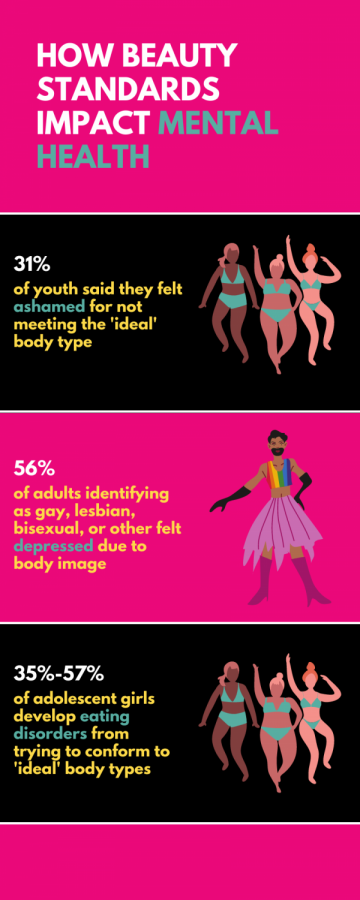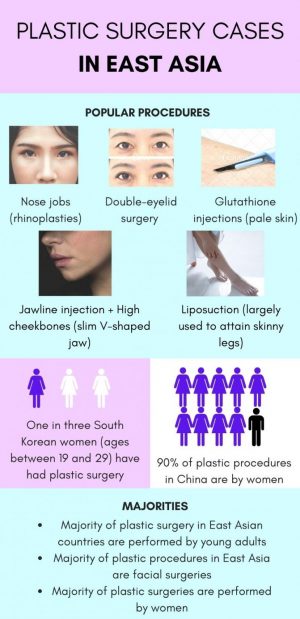LGBTQ+ community broadens beauty standards to emphasize self-expression
More information can be found at the Mental Health Foundation and ANAD
March 19, 2021
Beauty standards have been used to control and ensure that people fit into the norm of appearance; however, these standards damage a person’s ability to express themselves and impede individual creativity as a whole.
According to Teen Vogue, beauty standards worsen mental health issues in most people. The rise of social media has brought a lot of changes in the past few decades, one of which has been increasing the LGBTQ+ community’s impact on changing society’s toxic understanding of beauty.
“Beauty norms have changed in the sense that they are less restrictive,” senior Yatra Karki said. “I think we’re slowly progressing in how we idolize beauty and the many interpretations of what we believe beauty is.”
The queer community has been artistically broadening the definition of beauty, but recently, social media has allowed the community to influence a larger audience. LGBTQ+ makeup artists, like James Charles, Nikita Dragun and Patrick Starrr, have helped beauty standards become more about self-expression rather than conformity, thereby also making the mainstream beauty industry, including big name brands, to be more inclusive.
“I used to get made fun of for wearing a full face [of makeup],” senior Donny Nguyen said. “But now, the LGBTQ+ community has lifted the gender norms by sharing their stories on social media and encouraging kids to express themselves.”
Many young LGBTQ+ individuals still have difficulty exploring different styles of beauty or fashion due to long-existing social stigmas. However, celebrities with influence, like Harry Styles and Ruby Rose, have been using social media to normalize the breaking of gender norms in beauty.
“When I was growing up, there were some days where I wanted to dress up and be super girly and other days where I wanted to wear exactly what my guy friends wore,” Karki said. “I thought that I had to look a certain way because I was a girl and they were boys, but as I got older, I began wearing clothes regardless of gender stereotypes.”
This emphasis on self-expression in mainstream beauty and freedom to break gender norms has helped and continues to help people find their unique styles.
As a result of abandoning conformity and expanding beauty norms, some also feel more empowered to intertwine beauty and art, boosting individual creativity.
“The LGBTQ+ community brought a new light to the makeup industry where men get to experiment with makeup and explore their inner creativity,” Nguyen said. “[The community] has taught me to be comfortable in my own skin, and it has allowed me to branch out and meet new people with the same interest in makeup.”






